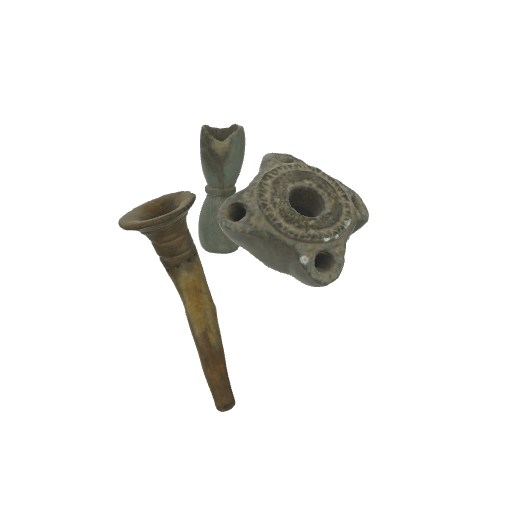Pipes
Pipes are devices used to consume dried tobacco, or other plants, by inhaling the smoke emanating from the burning leaves. In the 15th century, indigenous pipes are generally made of stone, clay or bone, and are shaped and decorated. Those bearing an effigy (a human or animal head ornament) are more often used for ceremonial purposes, such as during a healing ritual.
Among the Indigenous peoples of the St. Lawrence estuary, tobacco consumption has political, cultural and spiritual significance. Pipes are smoked at diplomatic events, to begin or end alliance negotiations, and for trade purposes. Tobacco is renowned for its medicinal properties, and the Wolastoqiyik people also smoke pipes to treat certain illnesses such as earaches. Since smoke rises towards the sky, tobacco is also associated with offerings and can represent a way of communicating with spirits.
Tobacco is a plant native to Central and South America. In North America, it is cultivated by the Iroquoian-speaking peoples living upriver, south of the Great Lakes. It is one of the first plants to be domesticated around 8,000 years ago and to be used in trade between nations.
References
Date: Before the 17th century
Origin: Unknown
Owner: Vieux moulin—Hydromellerie et miellerie. “Musée de la Neufve-France” private collection. Sainte-Flavie.
Sources:
Ferland, C. (2007). Mémoires tabagiques. L’usage du tabac, du XVe siècle à nos jours [Smoking memories. Tobacco use, from the 15th century onward]. Drogues, santé et société, 6(1), 17–48. https://id.erudit.org/iderudit/016942ar
Daviau, M.-H. (n.d.). Pipe de pierre à la période historique [Historical period stone pipe]. ARCHÉOLAB.QUÉBEC. Retrieved October 2, 2022, from https://www.archeolab.quebec/familles-d-objets/pipes-de-pierre-de-la-periode-historique
